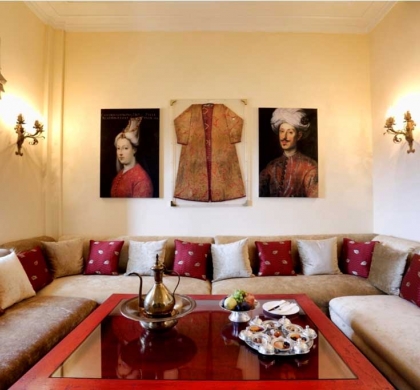Buy or gift a stand-alone digital subscription and get unlimited access to dozens of back issues for just £18.99 / $18.99 a year.
Please register at www.exacteditions.com/digital/cornucopia with your subscriber account number or contact subscriptions@cornucopia.net
Buy a digital subscription Go to the Digital EditionA new capital called for new architecture. Ankara in the 1920s and 1930s produced a fascinating diversity of styles as the foreign powers dragged themselves away from the Bosphorus and settled reluctantly on the Anatolian plateau
Atatürk showed himself to be an iconoclast and an innovator in switching his capital from Istanbul to Ankara. In this, as in much else, Mustafa Kemal’s bold action was eventually emulated, by Australia, Brazil and Pakistan, among others. A spate of new public buildings resulted – the Grand National Assembly, the ministries, the presidential palace itself – which remain as monuments to late-1920s and 1930s taste. So, too, in their more individualistic ways, do the principal embassy buildings of the period.
In 1919 Mustafa Kemal’s Nationalists moved their headquarters to the old farm school in Keçiören, on the outskirts of Ankara – or Angora as it had been known since classical times – from Sivas, a day’s journey to the east. Ankara, an important trading post in Hittite times, was then just a small town in Anatolia, 300 miles from Istanbul. Although the Baghdad railway had reached there as early as 1893, it had only intermittent contact with the outside world. Its sense of isolation had been exacerbated by a fire during the First World War which had destroyed swathes of the old lath-and-plaster houses that lined the steep cobbled streets huddled about the citadel.
The arrival of the Nationalists did little to change the physical aspect of Ankara while Anatolia remained in the grip of civil war and invasion that followed the First World War. But on 18 March 1920 the last Ottoman sultan, Mehmed VI Vahdettin, definitively adjourned parliament in Istanbul. The way was open for a legitimate provisional Turkish national assembly to open a month later in Ankara. Mustafa Kemal was elected its president. While operational headquarters remained in the old farm school on Ankara’s outskirts, he and his inner circle appropriated the stationmaster’s house, below Ulus, Ankara’s market area, built up among the extensive ruins of the Roman provincial capital of Galatia…
How the diplomatic world dragged itself away from Istanbul and settled in the new capital. By Norman Stone
Colourful mountains of melons are a common sight at weekly street markets. Connoisseurs examine them, sniff them, weigh them in their hands. The stalk should have dried slightly, the bottom yield gently if pressed and the fruit should feel heavy and full.
Also see Cornucopia 47, Watermelons
More cookery features
Phrygia, in western Anatolia, was one of the most powerful kingdoms in the Near East – home to Midas, Gordius and Alcibiades. Today the remnants of their lives litter this forgotten landscape, abandoned by all but a few villagers who still tell stories of the unfortunate king who lived to regret his golden gift. David Barchard heads to the Phyrigian highlands to explore a land of myth and mystery. Photographs by Fritz von der Schulenburg
In Turkey the tireless George Maw was able to indulge in both his loves. He found inspiration for the decorative tiles made by his family pottery. And he discovered the plants that inspired his magnificent book on crocuses.




Cornucopia works in partnership with the digital publishing platform Exact Editions to offer individual and institutional subscribers unlimited access to a searchable archive of fascinating back issues and every newly published issue. The digital edition of Cornucopia is available cross-platform on web, iOS and Android and offers a comprehensive search function, allowing the title’s cultural content to be delved into at the touch of a button.
Digital Subscription: £18.99 / $18.99 (1 year)
Subscribe now